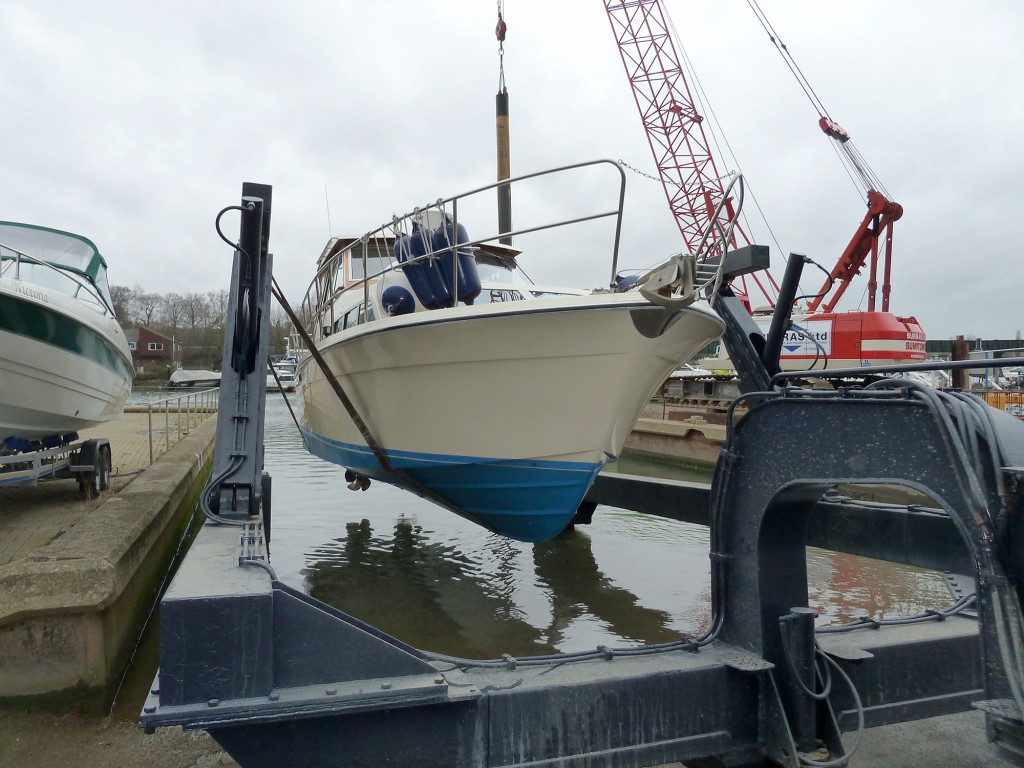What can you do to ensure a smooth start to your 2014 boating season?
Newsletter Articles
With a hint of sunshine, are you, or more importantly your boat ready to go afloat?
It may sound simple, but draw up a pre-launch checklist, either for you or your boatyard to carry out. This will help to significantly reduce the risk of potential accidents, breakdowns, or worse, sinking. These checks are particularly important after Winter where skin fittings, pipes, engines and water-cooling systems may have suffered damage that is not easily noticeable from a casual inspection. It is also great is to be present when the boat is launched. If this is not possible, precise instructions should be given to the boat yard to inspect your boat internally after launching to make sure it’s watertight. Every year we see at least one sinking following a launch because the speed log or a hull fitting is not secured.
The basics before she goes afloat would be:
Check all the water carrying pipes, service the engines and any generator. Make sure that the fuel and gas systems are checked, gas can kill, so don’t take chances. Ensure the fire extinguishers, flares and lifejackets are fully serviced and up-to-date. If your boat comes home with you at year-end, then check the trailer bearings as failure can often lead to major hull damage if a wheel comes off.
Once back in the water, preferably before she is moved back to her home berth and before you turn the key, I find a good look around the engine room is well worth the time. Even if you are not mechanically minded, you may just save a small fortune. Whether you use your own skills, a local mechanic or a main dealer, it may well be quite a while since the engines actually were started. So here are some basic checks that I would recommend before the key turns.
Have a good look over for anything that has come loose and see that all hoses are properly attached, preferably double clipped. If you are capable with the spanners, then checking that the engine mounts are nice and tight. Next if it’s a shaft drive boat would be the couplings. They undergo extreme forces especially when we go from ahead to astern, these will have either locking nuts or thread lock when last done up, both have been known to come loose. A glance over the stern glands to see what type and do they need burping to clear any airlocks, some lubrication if a greased type or a check of the sea cock if water cooled will cover the stern gear area. If out of the water, check the propellers blades for any damage – it’s the equal of having your car wheels balanced – vibration places lots of extra forces on the whole drivetrain. Outdrives need an extra check to make sure the bellows have not perished. Most have a two-year service interval, don’t leave it longer as a split can lead to serious damage.
Now to the fluids, the coolant should be topped up and be the correct strength, it saves corrosion and internal damage not just cools the engine. The sea water side will need a check as the impellors will have sat for a few months. When you start up place your hand on the sea water pump face plate, it should feel stone cold, any warmth means the pump is not pumping water, really cold is good, especially in the UK!
Oil will need the level and consistency checked, remember the gearbox, even in these health and safety conscious days rubbing a small drop between your fingers can tell you lots, any grittiness is an indication of something more serious, maybe time for a knowledgeable friend!
Now the belts, again they may have sat for a few months, any rust or corrosion on your pulleys will quickly shred the nice clean belts, so if the pulleys are rusty or corroded a clean off first is well worth it. Engine rooms are cold drafty places and a damp winter means that even with some heating it may have been a hard few months just sat there!
Lastly the batteries, if you have been on shore power with a trickle charge on they should be fine, but if they have just sat there in the cold a charge before you ask them to turn over two large lumps of metal would certainly be generous. If no shore power then take them out and take them home for a charge first. If your batteries are not of the sealed type then checking levels and topping up with deionised water will look after them.
Lastly before we start the engines check that the seacocks are open!
By following these simple checks you can reduce your chances of damaging your vessel, leaving you and your boat to enjoy the season.
